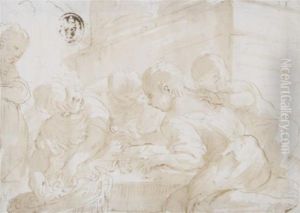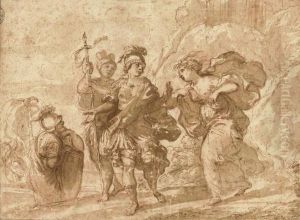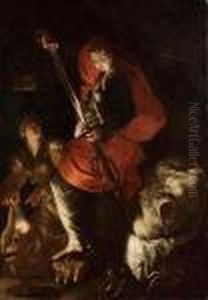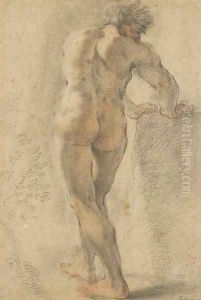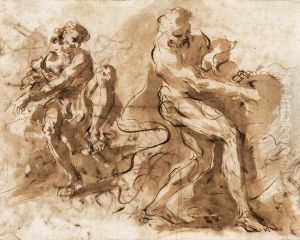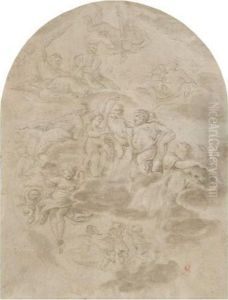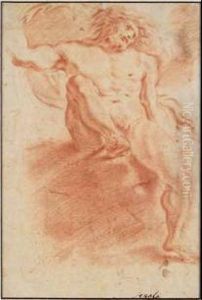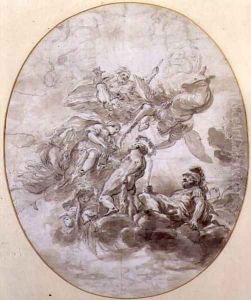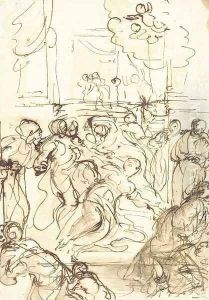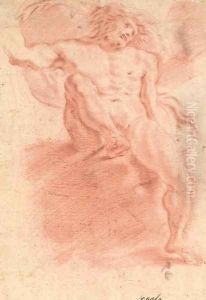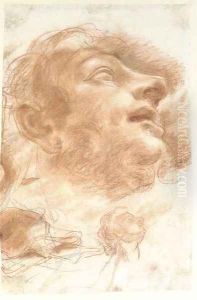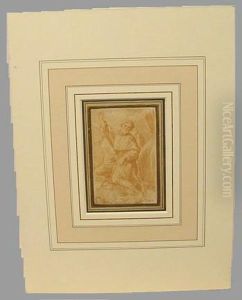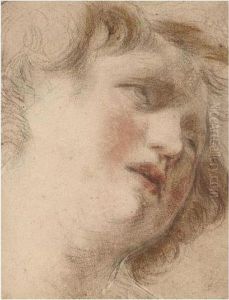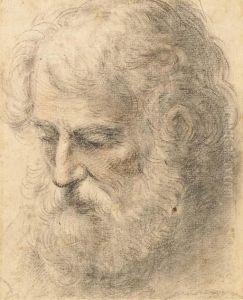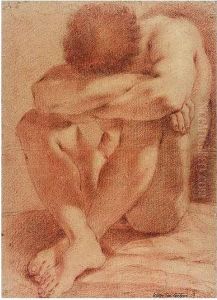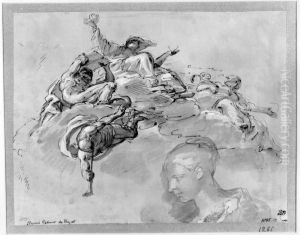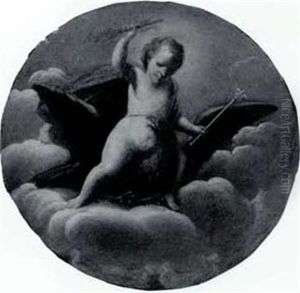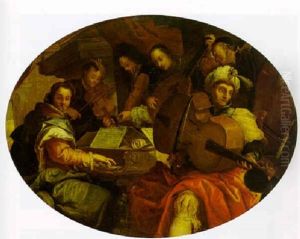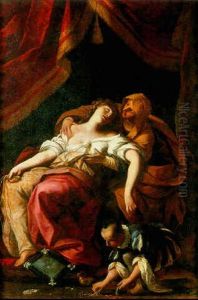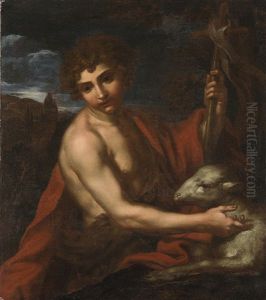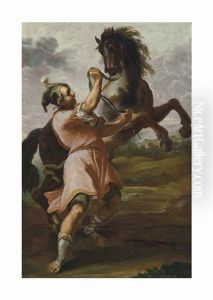Domenico Maria Canuti Paintings
Domenico Maria Canuti was an Italian painter of the Baroque period, born in 1620 in Bologna, Italy. He is particularly noted for his work in fresco and his contribution to the decoration of palaces and churches in his native city and elsewhere in Italy. Canuti was a student of Guido Reni, a leading painter of the Bolognese School, and he also worked closely with other prominent artists of his time, such as Flaminio Torre and Pietro da Cortona.
Canuti's style is characterized by its dynamic compositions, elegant figures, and a skillful use of light and shadow which can be attributed to the influence of his mentors and the Baroque aesthetic. His work often contains classical themes and allegories, reflecting the intellectual environment of the time which was deeply engaged with the rediscovery of antiquity.
One of his most significant works is the fresco decoration of the Palazzo Pepoli in Bologna. Canuti painted a series of mythological scenes that showcase his talent in creating vibrant, narrative-rich compositions. He also worked on the frescoes in the Palazzo del Giardino in Parma, which further solidified his reputation as a master fresco painter.
In addition to his fresco work, Canuti produced a number of oil paintings and drawings. His drawings were particularly appreciated for their expressiveness and mastery of form, and they were collected by connoisseurs and fellow artists alike.
Canuti's influence extended beyond his lifetime as he was a respected teacher, with students who would go on to become notable artists themselves. He was an active member of the Accademia Clementina, which played a central role in the cultural life of Bologna.
Domenico Maria Canuti passed away in 1684, leaving behind a legacy that is often overshadowed by some of his more famous contemporaries but is nonetheless significant in the context of the Baroque movement in Italy. His works can still be admired in various churches and palaces, and they continue to be studied for their artistic merit and historical significance.
